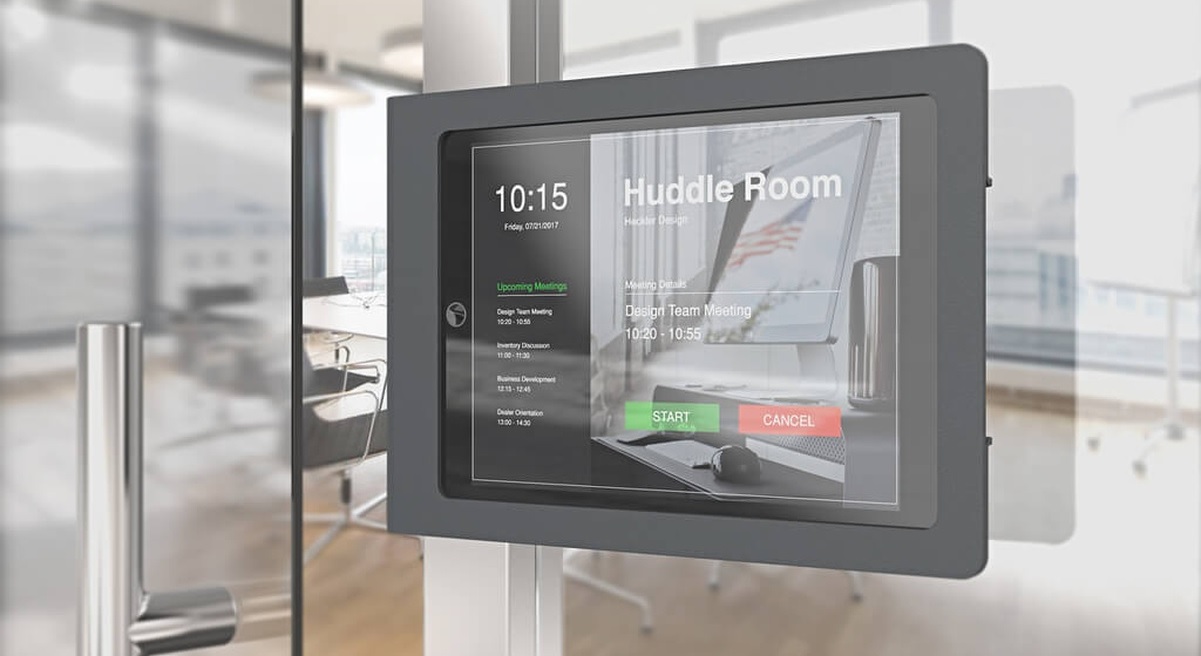
Despite the fact that working from home has become more commonplace since the 'Corona era', there are many companies that expect their employees to continue working in the office as well.
After all, it fosters team spirit and the value of non-verbal communication during conversations and meetings should not be underestimated either.
The continued combination of remote and office working is causing renewed layouts of available spaces.
Existing offices are being set up as flex spaces, dedicated telephony rooms are being installed and meeting rooms are being deployed more tightly.
This means that planning 'time slots' for these spaces is becoming increasingly important; nothing is more annoying than the space not being available after all because it turns out to be double-booked or a colleague is cheeky enough to occupy it just like that.
Using tablets for your flexible spaces
Placing tablets outside these flexible spaces creates an efficient way to manage shared spaces.
Management systems provide a way to reserve meeting rooms, display schedules and keep track of daily activities using the iPad or remotely via employee computers. These meeting room reservation systems often use a tablet in a holder on the outside wall of the meeting room.
Tablet holder meeting room
Such a tablet wall holder ensures, for example, that the tablet cannot be taken away just like that and thus has an important anti-theft functionality.
Various wall holders can also be equipped with Ethernet and charging facilities, so that the tablet always has power and stable, secure internet access.